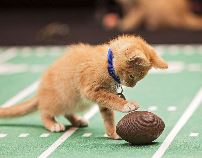Welcome to Our September Guest Blogger
 The Fall semester is underway here at the Law School, and I would like to welcome as our student guest blogger for September 3L Ashley Heard. Ashley is originally from New Berlin, Wisconsin, and is interested in employment law and appellate litigation. Her undergraduate education focused on marketing, graphic design and photography, and religious studies.
The Fall semester is underway here at the Law School, and I would like to welcome as our student guest blogger for September 3L Ashley Heard. Ashley is originally from New Berlin, Wisconsin, and is interested in employment law and appellate litigation. Her undergraduate education focused on marketing, graphic design and photography, and religious studies.

 I am pleased to announce that our guest Alumni Blogger for March is
I am pleased to announce that our guest Alumni Blogger for March is  It’s almost the time of year when people wonder what size television they can use to display the SuperBowl on. To answer that, I am resurrecting
It’s almost the time of year when people wonder what size television they can use to display the SuperBowl on. To answer that, I am resurrecting